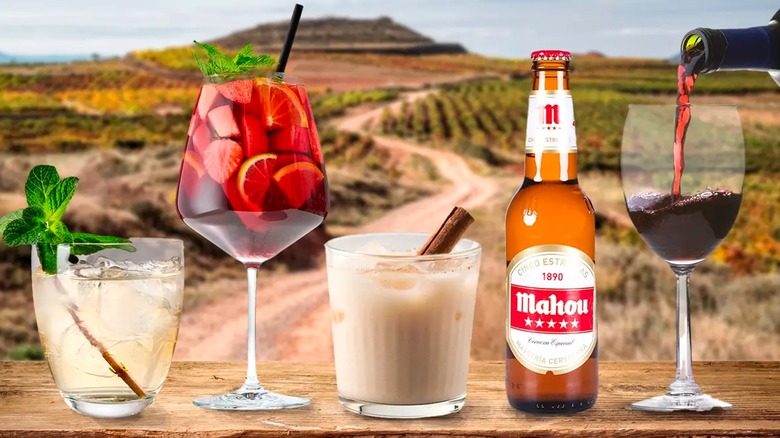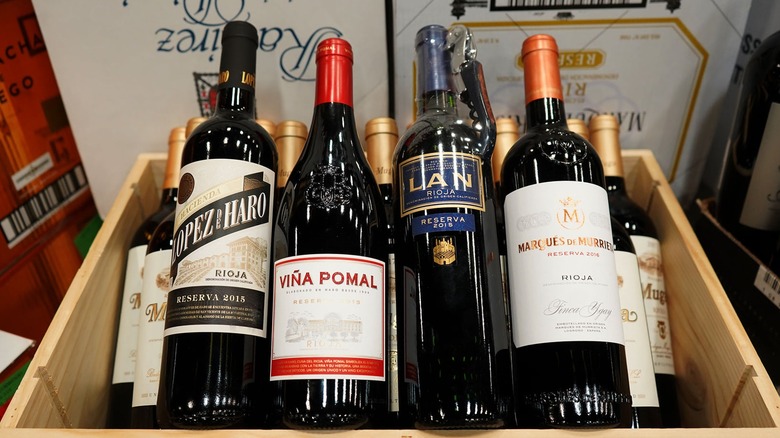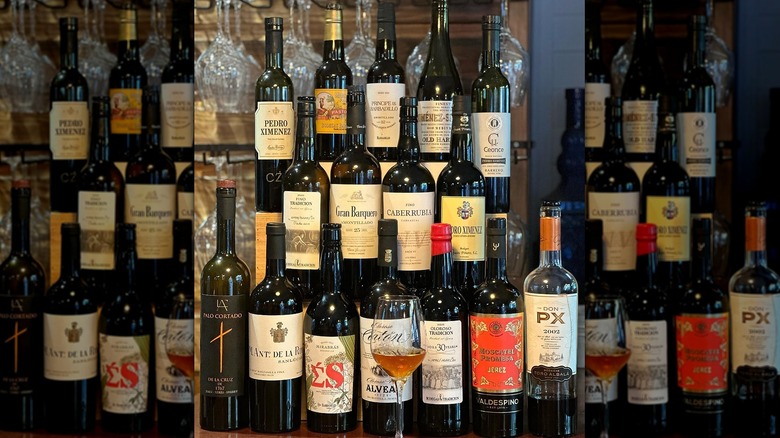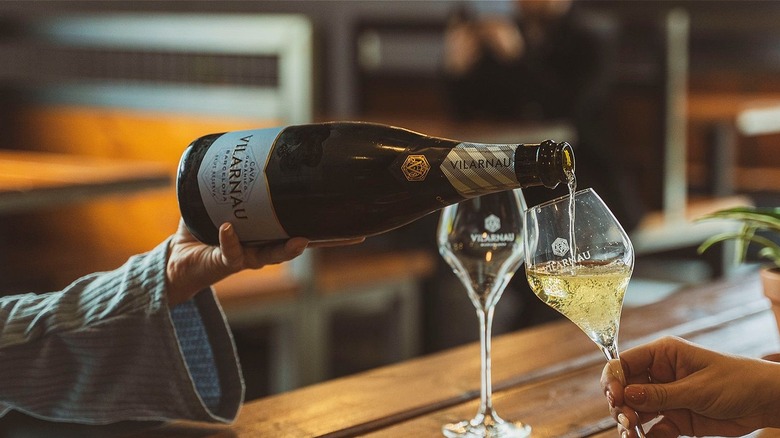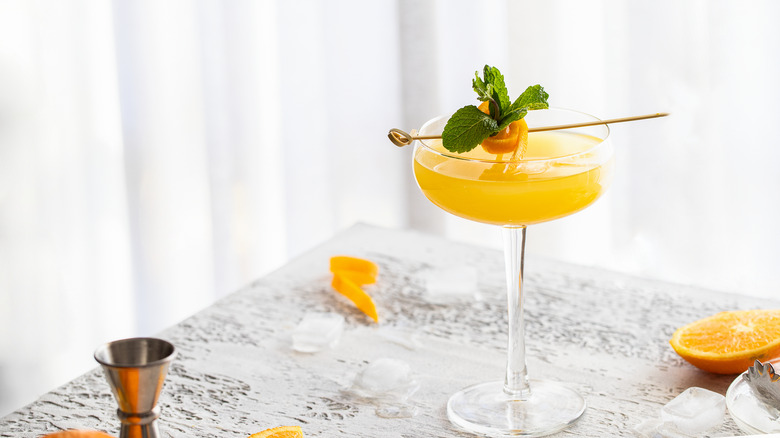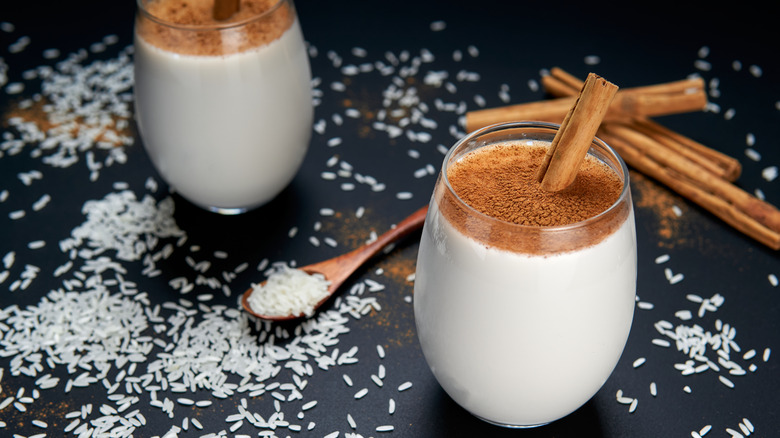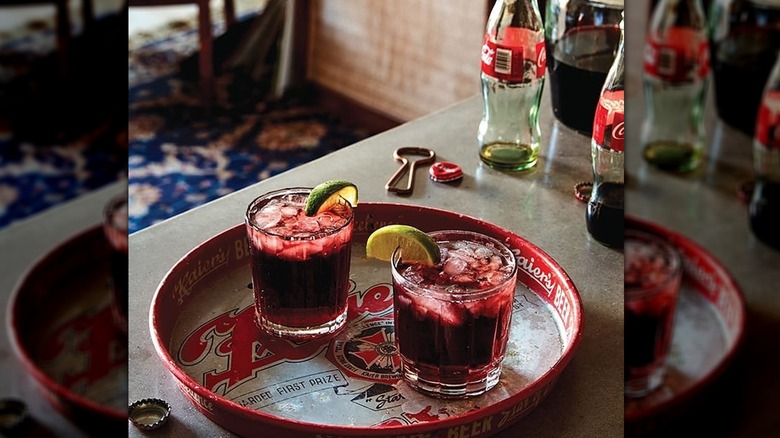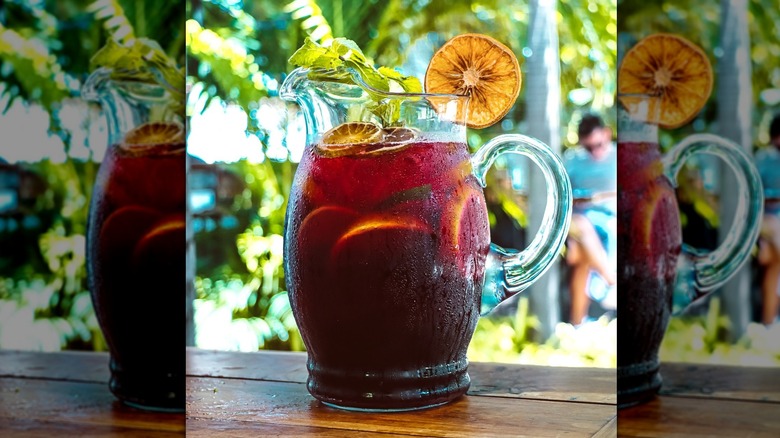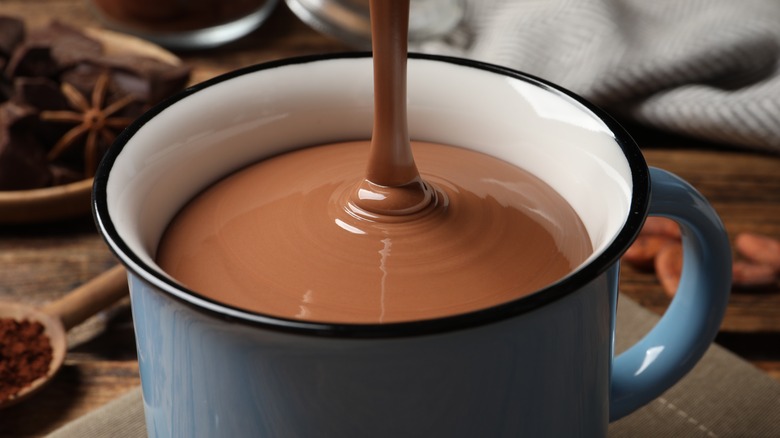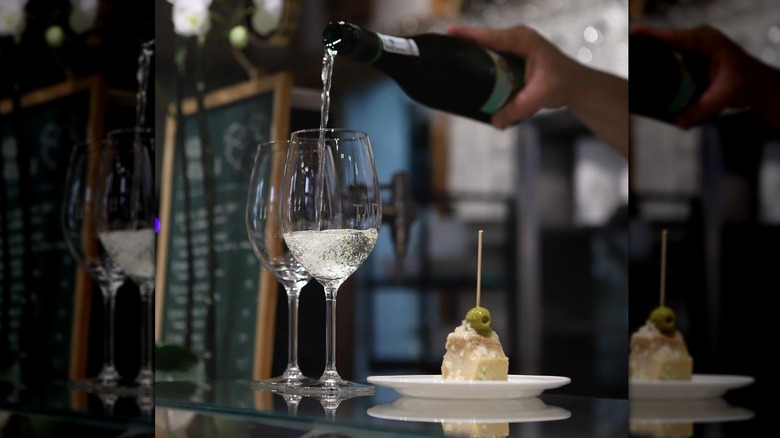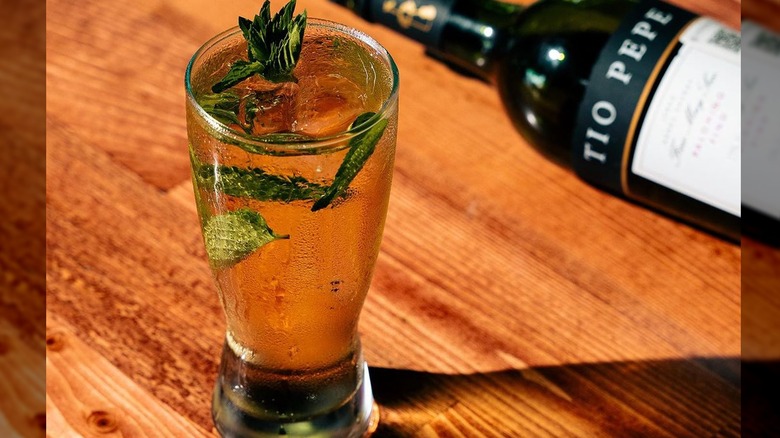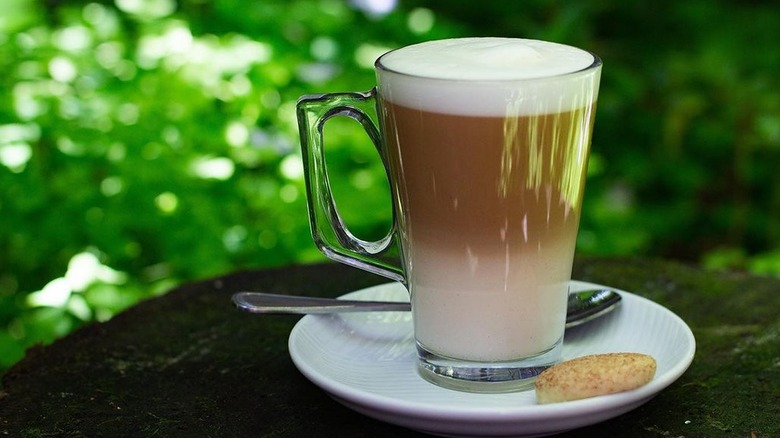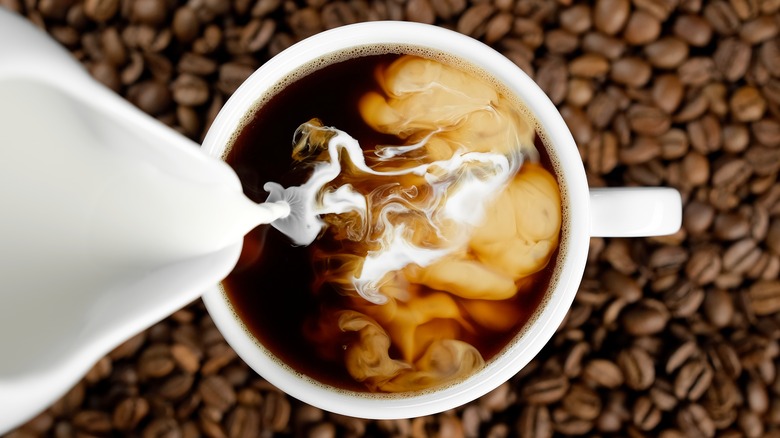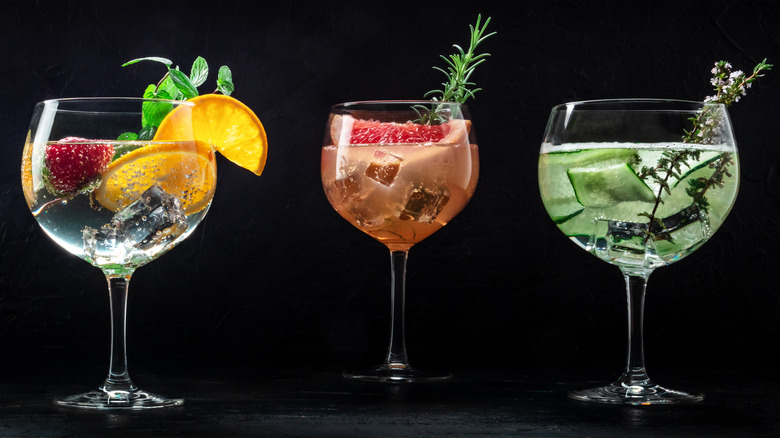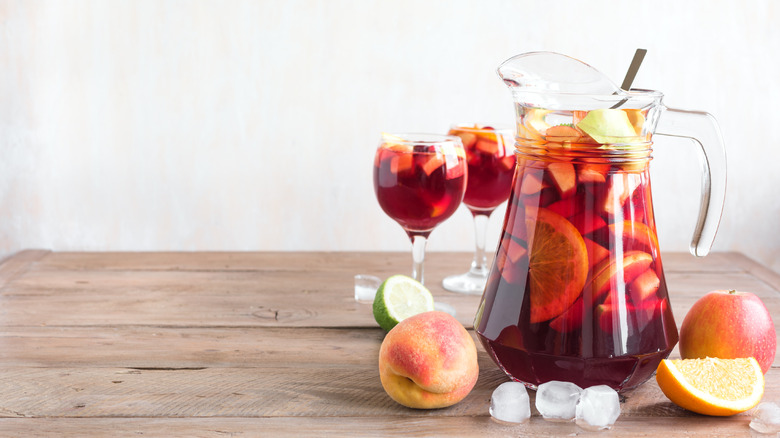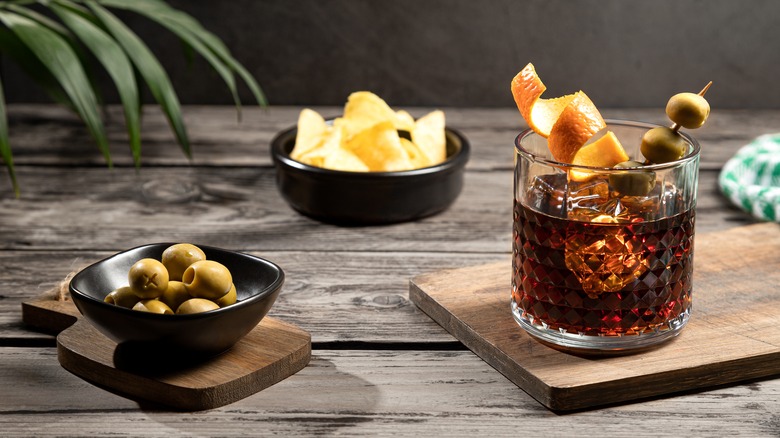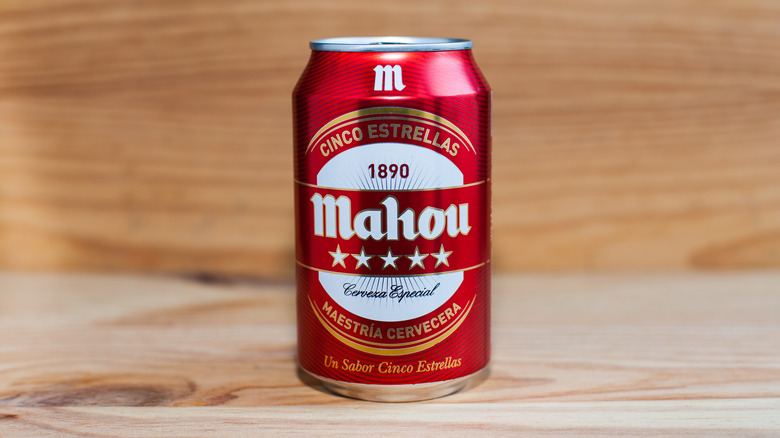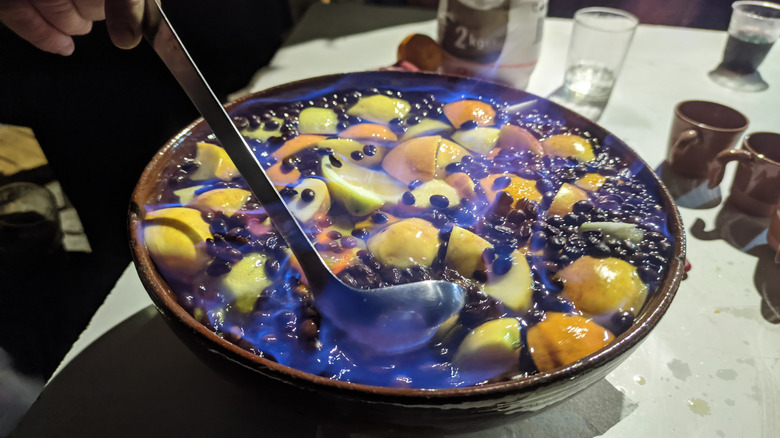18 Spanish Drinks You Should Try At Least Once
The people of Spain are known for having a joyful zest for life. Friends and family join together regularly to enjoy tapas and pintxos, lively conversations, and thirst-quenching beverages to cool the palate during the country's arid days.
Spain is one of the most culturally diverse countries in the world. With more than 35,000 years of humans inhabiting Spain, the fourth-largest European country has had a diverse range of rulers, including the Celts, Phoenicians, Carthaginians, Romans, Visigoths, the Moors, and a variety of Christian Spanish monarchs, each infusing their culture, traditions, and cuisine into Spanish life.
With such diversity, the country serves up dozens of drinks and cocktails that tell the story of the land and its rich history. Deciding which Spanish drinks to enjoy can be overwhelming. We are here to help by narrowing down some of the most authentic, delicious, and noteworthy Spanish beverages you must try at least once.
Rioja wine
Spain is the world's third-largest wine-producing country, just behind Italy and France. The tempranillo-based red wines from Rioja are some of the most well-known and respected. Grapes have been growing in the central northeastern Spanish region for more than 2000 years. Sitting entirely inland, surrounded by mountains to the north and south, with the Ebro River running through it, the region has a moderate continental climate, a vast array of soil types, and elevations ranging from 900-1800 feet above sea level. The terroir makes Rioja ideal for growing high-quality grapes. While tempranillo is the main variety, blending varieties like garnacha, graciano, and mazuelo also thrive. The combination creates wines with fresh aromas, deep color, balanced acidity, and tannin.
Rioja wines feature a medium to full body, with layers of red and black fruits, earthy dried tobacco, leather, toasted spice, and vanilla. Crianza Rioja, which age two years, of which one is in barrel, pairs beautifully with pizza, burgers, and seafood paella. In contrast, bold, Gran Reserva wines, which age five years, of which two are in barrel, are perfect with hearty stews or slow-cooked meat, like braised beef short ribs.
Due to the area's quality and diversity, Rioja wines are Denominación de Origen Calificada (Denomination of Qualified Origin), or DOCa, representing the highest quality classification for Spanish wines. Rioja is home to more than 500 wineries, including top producers like CVNE, Muga, Beronia, Valdemar, and Marques de Murrieta, with some wines priced at around $20 a bottle.
Sherry
Though there is not one official drink of Spain, the country's famous fortified wine, sherry, ranks among its most widely known and celebrated beverages. The wine hails from the south in Andalucia, where palomino, pedro ximénez, and moscatel grapes grow in an area known as the sherry triangle around the city of Jerez. The region's white albariza soils impart a mineral-rich character to the fruit.
The production of dry sherry is either biologically, where, after fermentation and fortification, the palomino wine ages in barrels under a yeast cap known as flor, or oxidatively, where wine is exposed to oxygen while aging in the barrel. Sherry is available in various styles and colors, from very dry, young, light golden fino with floral, citrus, and saline notes to well-aged, rich, espresso-colored, highly oxidized oloroso with flavors of dried fruit, nuts, and spice. Though the color of the sherry may become very dark, sherry production uses only white grapes. Producers like Gonzalez Byass, Lustau, and Valdespino are producing quality options with prices ranging from around $20 a bottle to several hundred dollars.
Cava
The most well-known sparkling wine in Spain is cava. The most famous cava wines come from Catalunya, in a region known as the Penedes, not far from Barcelona. Still, there are four authorized Denominación de Origen (DO) or designation of origin, areas within the country, including Rioja, Valencia, and Extremadura. By law, cava production occurs using the traditional method, similar to the production of Champagne, where the second fermentation creates the bubbles inside the bottles.
Though the production techniques are French by origin, everything else about cava is entirely Spanish, including the Spanish white grape varieties that create it, among them macabeo, parellada, and xarel-lo (pronounced cha-rel-o). Xarel-lo adds acidity and alcohol with herbal notes, macabeo adds orchard fruit and floral notes, and parellada adds aroma and texture with fresh white fruit notes. While the production of cava creates a wine with similar characteristics to Champagne, including yeasty notes of fresh brioche, blanched almonds, and citrus cream, the price of most cava wines is a fraction of what a typical Champagne will cost, with many options priced below $20.
There are 147 cava producers in Spain today, including the historic Freixenet brand, started in 1914 by husband and wife Pedro Ferrer and Dolores Sala. Today, the Ferrer family still owns the brand along with Segura Viudas, which has been producing Cava since 1969, and Can Sala, which has a history dating back to 1861.
Agua de Valencia
If you enjoy a brunchtime mimosa, Spain's Agua de Valencia should be on your radar. It is one of the best brunch cocktails in the country. Meaning "Valencian Water," this drink originated in 1959 in Valencia, on the eastern coast of Spain, where Constante Gil, owner of Café Madrid, answered a challenge by a group of regulars to create a new drink. Gil mixed fresh orange juice with vodka and gin using the region's beloved sweet Valencia oranges.
Gil topped the cocktail with cava, creating what would become a staple for the bar and the entire coastal region. Today, pitchers of ice-cold Agua de Valencia are served at tapas bars throughout Valencia, especially on hot days at the beach.
Horchata
Horchata's history dates back to 2400 B.C. when North Africans ground a tuber known as chufa or tiger nuts and then mixed them with water and sugar to create a sweetened drink with cooling and medicinal abilities. When the Moors arrived in Spain, they brought horchata with them. Today, preparing horchata with tiger nuts is still prevalent in Valencia. Almonds, cashews, or other nuts are also popular bases for the drink, which is now appreciated throughout Latin America.
Other versions include Mexican horchata, which typically uses rice, and Puerto Rican horchata, which uses sesame seeds. Classic Spanish horchata has the silky, creamy texture of milk with a balance of earthiness from the nuts and just the right amount of sweetness. A sprinkle of cinnamon on top finishes the drink with warm spiciness.
Kalimoxto
Mixing wine with club soda or seltzer is a relatively standard way to create a white or red wine spritzer. The Spanish prefer a slightly sweeter spritzer, so they add Coca-Cola to red wine instead to make a drink known as a kalimotxo or calimocho (pronounced cali-mo-cho). Its origins are in the northern Basque Country, dating back to the 1920s. However, soft drinks were not widely obtainable at the time. By the 1970s, the soda was available nationwide, as Coca-Cola established its first factory in Spain in the 1950s.
The kalimotxo creation story goes that purveyors at a music festival realized their wine had gone off, likely from cooking in the sun's heat. To salvage the drink, they added Coca-Cola to the wine in equal parts, naming it kalimotxo. Thirsty festival goers loved the spritzer, and it quickly caught on, spreading throughout Northern Spain. The traditional way to enjoy this drink is as an aperitif with plates of jamón Ibérico, olives, almonds, and chips.
Tinto de Verano
Atinto de verano, meaning "red wine of summer," mixes lemon-lime soda, like Sprite, or in Spain, La Casera, with red wine in equal parts. As in a kalimotxo, it is best to refrain from using your best bottles of Bordeaux or Burgundy for the cocktail, as the sugary drink will ruin the nuance of fine wine. Instead, any inexpensive red will work.
Creating a kalimoxto or tinto de verano is one of the best uses for leftover wine. The sweetness from the soda will mask the day-old, slightly oxidized flavors in the wine. This refreshing, low-alcohol cocktail combines the drinks in a 1-to-1 ratio with a lot of ice, becoming the ideal way to enjoy red wine throughout the hot summer months.
Chocolate caliente
Chocolate has been a part of Spanish culture for more than 500 years. Though cacao beans are not native to the country, Spaniards were the first to add sugar, removing the bitterness and creating a sweet drink known as chocolate caliente, similar to the hot chocolate we enjoy today — but much thicker. Spanish explorers saw the importance the Mayan and Aztec people placed on cacao beans, so they brought them back to Spain as a gift for the nobility. Spain's Cistercian monks were responsible for the original creation.
Though some hot chocolate preparations feature cocoa powder, Spain's hot chocolate uses melted chocolate as the base, resulting in a thick, custard-like texture you can eat with a spoon. Or better yet, use the chocolate as a dipping sauce for hot, fried churros.
Orujo
In the production of wine, after pressing the grapes and extracting the juice, the pomace of the fruit remains; some winemakers opt to discard the remnants. By contrast, others utilize the pomace to craft a type of brandy. This is known as grappa in Italy. In France, it is called marc. Those in Northern Spain refer to the drink as orujo. Meaning "grape pomace," orujo is typically crafted to 100-proof alcohol. The brandy is a clear, colorless liqueur made by fermenting and distilling grape pomace, seeds, and stems slowly to produce the high-alcohol spirit with a slightly bitter, fruity flavor reminiscent of grapes.
Galicians, fashioning the drink for centuries, pass down family recipes from generation to generation. Spaniards most often enjoy orujo at the end of a meal, slowly sipping a single shot of the brandy. While un-flavored, unaged orujo is the most standard, some versions are aged in barrels, known as orujo envejecido or aged orujo. Flavored orujo often includes ingredients like lemon, honey, or chocolate.
Txakolina
One of Spain's most regionally authentic wines is Txakolina, (pronounced chock-oh-LEE-nah). Txakolina is a slightly effervescent wine made in the Basque Country from hondarrabi zuri grapes for white Txakolina wine or hondarribi beltza for red wines. Sometimes referred to as just Txakoli, the wine is light, fresh, and clean, with a subtle fizziness enhanced by holding the bottle high and far away from the glass when pouring.
The Basque region enjoys a maritime climate thanks to the influence of the Atlantic Ocean, which provides a salty, saline note in the region's white wines, amplifying the floral, citrus, and stone-fruit notes. With a moderate alcohol content, usually around 11%, and an uncomplicated style, Txakolina is an ideal summer wine pairing with every type of Basque pintxos and other authentic Spanish dishes, particularly seafood-based options like fried clams, grilled calamari, or marinated fresh anchovies, called boquerones.
Rebujito
Around the same time Spaniards were drinking kalimotxo cocktails in the north, southern Spaniards around Andalucia began drinking rebujitos, (pronounced re-boo-he-toe). The cocktail combines one of the region's signature drinks, fino sherry, with lemon-lime soda. Using fino-style sherry made biologically without oxidation ensures the drink will deliver a light, fresh body and taste.
Fino's natural flavors of almonds, citrus, freshly baked bread, and a subtle note of salinity meld with the lemony fruitiness of the soda; the soft drink's sweetness cuts through the slight bitterness of the sherry. A rebujito is traditionally served over ice with a sprig of fresh mint to add an extra herbaceous note. Though sherry lovers throughout the country enjoy rebujitos, the cocktail is an ideal thirst-quencher in Andalucia on a hot summer day.
Café cortado
The residents of Spain's northern Basque country love café cortado, or "cut" coffee. The drink combines one part espresso with one part milk, creating a small but mighty, highly flavorful espresso drink that could change how you drink coffee. Espresso features an inherent acidic bitterness, so combining espresso with lightly steamed milk adds creaminess and a subtle sweetness to balance the strong coffee flavor.
The key to creating the best-tasting café cortado? Keeping the ratios of the two drinks equal. This ratio is generally 2 ounces — or a double shot — of espresso with 2 ounces of steamed milk, resulting in a 4-ounce drink that is the standard size whether you sip on a cortado in the Basque city of San Sebastian or elsewhere in Spain.
Café con Leche
Café con leche is one of the tastiest Spanish coffee drinks to try. Where the café cortado is typically a small, 4-ounce serving of espresso and milk, a café con leche comes served as a larger portion, blending equal parts coffee and milk in a large mug. Whole milk adds richness and natural sweetness. Spanish café con leche traditionally uses espresso versus drip coffee, with the espresso lending the drink a hearty earthiness and bitterness.
The drink's preparation also differs from that of a cortado. Instead of using steamed milk, café con leche has scalded milk. Scalding the milk gives the coffee a creaminess and a textured mouthfeel without adding foam. Spaniards often enjoy the espresso drink with their breakfast in the morning.
Gin and tonic
Nothing is better than enjoying a classic cocktail like a gin and tonic. The herbal, botanical, juniper notes of gin meld harmoniously with bitter quinine, with its refreshing bubbles tickling the palate. However, a gin and tonic — or as the Spanish say, "gin-tonic" — in Spain is unlike any other you have had. Using premium tonic waters, high-quality gin, and a wide assortment of garnishes, bartenders throughout the country are elevating the Spanish gin and tonic.
The accouterments set Spain's take on a gin and tonic apart. The drinks include a wide variety of colorful, flavorful enhancements, including apple slices and cinnamon sticks, cucumber and mint leaves, lemon peels, and rosemary, each working to enhance the liquor's floral and herbal notes. The cocktail is typically served in a large, bowl-shaped glass, allowing the aromas to rise from the glass while adding a festive vibe to the experience.
Sangria
Sangria, Spain's internationally famous wine and fruit-based summertime cocktail, continually inspires creative mixologists, resulting in hundreds of variations that amp up the flavor. The drink has been around since Roman times, when Spaniards would add wine made from grape vines planted by the Phoenicians to water to kill bacteria. This was important back when sanitation was lacking, and water wasn't always safe to drink on its own. Left with watered-down wine, people would add fruit, herbs, and spices to enhance its taste.
Sangria's name stems from the Spanish term sangre, or blood, indicating red wine is the original base for the drink. Today, there are versions with white wine, rosé, cava, and numerous fruits, juices, herbs, and liqueurs. Though some Spaniards consider it a drink for tourists, no one can resist sitting on the beach in Barcelona with a pitcher of refreshing red sangria.
Vermouth
Vermouth in Spain, or "vermut," is unlike vermouth in other parts of the world. While all vermouth is a grape-based, fortified wine with an alcohol level between 14% and 22%, Spain's version represents a well-rounded drink that goes beyond what you rinse your glass with before pouring a martini. The Spanish enjoy vermut on its own, over ice, with an orange twist, and sometimes a splash of seltzer. It is often imbibed during la hora del vermut, or "vermouth hour," at vermuterías or "vermouth bars" across the country, which serve the aromatized wine on tap.
Where Italian vermouth can be sweet, and French can be bitter, Spain's option balances the two flavors, rounding out the bittersweet characteristics with an infusion of herbs, spices, citrus, and other fruits. While the drink is available in a dry, semi-sweet, and sweet style, the low-alcohol, sweet vermouth rojo is the most common in Spain. The base wine is white; however, the color of the vermouth is a deep red, achieved through a prolonged infusion of caramel, herbs, spices, and botanicals.
Mahou cerveza
An old saying in the wine industry states "It takes a lot of beer to make good wine." Given that, it makes sense that Spaniards consume a lot of beer in the country that produces the third most wine in the world. According to the World Population Review, Spain is among the top 10 countries in drinking the most beer, both in total consumption and per capita.
One of the most popular in the country is Mahou Cerveza. The Madrid-based producer has been brewing beer since 1890. Its signature selection, Mahou Cinco Estrella — or five stars — is an aromatic, refreshing pale lager-style beer with fruity, floral notes and a delicious, creamy palate that pairs well with such foods as ham and cheese croquettes.
Queimada
Travelers walking the ancient Camino Santiago trail to pay respects at the cathedral in Santiago de Compostela between spring and fall may encounter a fiery, mystical drink called queimada. The origin of queimada (pronounced kei-mah-da) remains unknown. Many believe that drinking the traditional cocktail, found in the northwestern region of Galicia, will ward off evil spirits. This makes it popular during Halloween (October 31) and the San Juan Festival, also known as Witches Night, on June 23. The former date coincides with Samhain, marking the Celtic new year, and the latter the summer solstice. Due to the region's Celtic ties, these are two important holidays.
Queimada combines high-alcohol orujo with coffee beans, sugar, lemon, and orange peel. The ingredients are stirred together in a large fireproof clay pot during a Galician ritual, which includes casting a spell to protect imbibers from malevolent spirits. The pot is then set on fire, creating a vibrant blue blaze that caramelizes the sugars and citrus peels, roasts the coffee, and burns off the alcohol. It is believed that drinking the Galician punch will cleanse the mind and soul from hate and evil while opening your heart to love and passion.
Static Media owns Tasting Table and Mashed.
